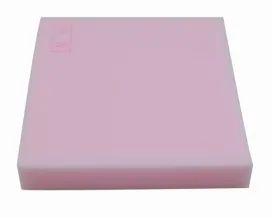(1) Cell opening ratio. When the opening rate of the product is high, most of the polymers are evenly distributed in the natural open-cell foam meridians, so the resilience of the product is higher; With higher incompressibility, therefore, the resilience of the product decreases. Therefore, the amount of foaming agent can be appropriately increased, and the difficulty of cell wall rupture can be moderate by adjusting the surface tension of the cell wall, thereby increasing the open cell ratio of the polyurethane foam.
(2) Cell shape. When the cell shape regularity increases, the resilience of the polyurethane foam increases, and the polyurethane foam with a spherical cell structure has better resilience. Polyurethane foams with needle-like cell structure are prone to cell collapse. Therefore, the foaming temperature can be appropriately lowered to prevent the cells from being squeezed and deformed due to excessive expansion.
(3) Cell pore size and its distribution. In the same system, a foam with a larger proportion of small cells will have a larger rebound rate. But the pore size of the cell is not as small as possible, but there is a good value. In addition, the rebound rate of foam plastics increases with the increase of cell density, and only when the cell pore size is reasonably distributed can the maximum cell density be obtained. Therefore, the cell stabilizer can be added in an appropriate amount.
(4) Polyether polyols. Within a certain range, the larger the relative molecular weight of the polyether polyol, the better the flexibility of the molecular chain and the better the resilience, and beyond this range, the hardness of the foam decreases. However, when using polyether polyols with relatively large molecular weights, measures should be taken to reduce their degradation. Such as adding an appropriate amount of antioxidants before the polymerization reaction.
(5) Isocyanates. In the formula, it is necessary to pay attention to the control of the isocyanate index, that is, the TDI index. The TDI index refers to the ratio of the actual amount of TDI to the theoretically calculated amount. The hardness of the foam can be easily and safely controlled within the range of TDI index 105~115. Within a certain range, with the increase of TDI index, the hardness and resilience of the foam increase. Therefore, the TDI index can be appropriately increased.
(6) Other factors. With the increase of the mass ratio of water to polyol, the resilience of the foam increases first and then decreases. Therefore, the amount of water added can be adjusted to maintain high resilience. As the mass ratio of chain extender to polyol increases, the tensile strength of the product increases and the resilience decreases. Therefore, the chain extender can be appropriately reduced.


